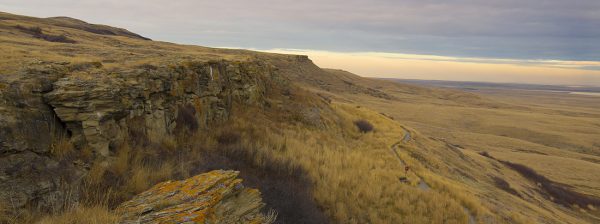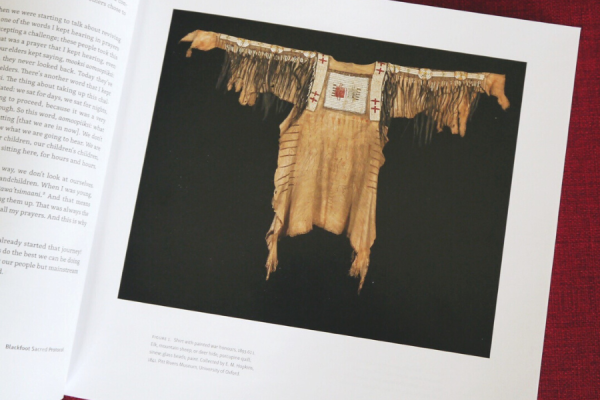
Vance Chief Moon
In 2010, five magnificent Blackfoot shirts, now owned by the University of Oxford’s Pitt Rivers Museum, were brought to Alberta to be exhibited at the Glenbow Museum, in Calgary, and the Galt Museum, in Lethbridge. The shirts had not returned to Blackfoot territory since 1841, when officers of the Hudson’s Bay Company acquired them.
Prior to the installation of the exhibits, groups of Blackfoot people—hundreds altogether—participated in special “handling sessions,” in which they were able to touch the shirts and examine them up close. The shirts, some painted with mineral pigments and adorned with porcupine quillwork, others decorated with locks of human and horse hair, took the breath away of those who saw, smelled, and touched them. Visiting with the Ancestors is an upcoming publication from AU Press that documents the journey of the shirts from England to Blackfoot territory and the impact this experience had on the Blackfoot people who were involved. As Laura Peers and Alison Brown write, “The visit of the shirts provoked astonishing effects across Blackfoot communities: ceremonies revived, children learning quillwork and hide tanning, people talking to each other about things that might not otherwise have been said.”

Blaise Russell
The importance of children is repeated throughout the book. As Frank Weasel Head wrote, “In our culture, in our way, we don’t look at ourselves. We’re always talking about our children, our grandchildren. When I was young, at the end of each elder’s prayer was a’ahssaistawa’tsimaani.[1] And that means bringing our children up in the right way. Bringing them up. That was always the end of a prayer. And that’s what I’m doing now. In all my prayers. And this is why I’m doing this.” A special effort was made to bring high school and college students to see the shirts. Teachers also expanded on the visit of the shirts and incorporated Blackfoot pedagogy into their curriculums. Ramona Big Head brought an artisan into her classroom to teach students how to tan hides and do quillwork. Other students responded to their visit with their ancestors with writing and fine art. Today, we are reflecting on the testimonies (both written and artistic) from some of the students.

Mercedes Weasel Head
“They were interested and amazed that the things that they were being taught in school and that they had seen in other museums were actually real. They were something that did actually take place and they were real and [they] held them in their hands. . . . And I think it’s going to be exciting to see the reactions this fall when they go back to school, which is soon, as to if they can capture that same technique. Not only from the cultural one and the pride behind it, but also from an artist’s standpoint.” –Darnell Rides at the Door

- Chantelle Panther Bone
“If I walked out of here, as one person walking out of here wanting to learn more, imagine if we can get ten people walking out of here wanting to learn more. That will cause a ripple effect. Especially the youth, the First Nations youth really need to learn more about their culture. Like I said, once the elders are gone, you know we are losing our information from the people who lived it. They all have a story; each one of these shirts. And we have to learn them. Otherwise we are losing a piece of our culture, and that’s one thing that’s sad to say but it may happen. Projects like this are just one step closer to our keeping our culture alive and keeping it going.” –Alison Frank-Tailfeathers, a member of the Kainai nation and a student at the Red Crow Community College
“The shirts played a huge part in who I am today. It gave me a sense of identity. Growing up without cultural influence, I felt lost. I was ashamed of being Native. I attended white schools. Being the only Native in a white school, I was put on the spot, they would ask me questions about my culture and I didn’t have a clue about it. Being involved opened my eyes, my mind and my soul. The talks the Elders and the others . . . gave helped me grow as a Niitsitapi. While doing the activities I felt connected to my ancestors and my cultural past.”–Anonymous
For more information about Visiting with the Ancestors, please visit our website.
[1] A’ahssaistawa’tsimaani, literally, ‘good raising’ (of children). To raise children well is to raise them with the proper values, to succeed in contributing to their growth and helping them live a long life by teaching them about what makes a good life.


